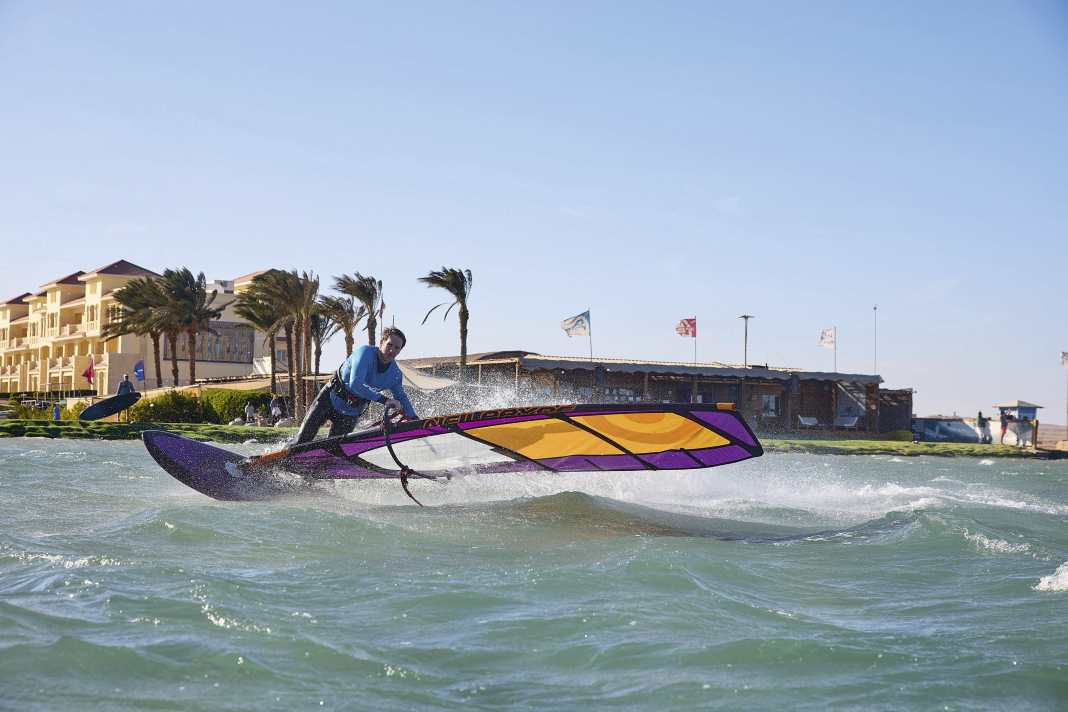





It doesn't make sense, the Carving-360 - at least from a rational point of view. After all, you end up travelling in the same direction as before. Fortunately, windsurfing is not usually a rational sport, but a highly emotional one. And from this point of view, a well-maintained 360 is one of the most beautiful and fun moves on the water. You can do it on flat water or even against a wave - it's always spectacular. We'll tell you what it's all about in our tutorial.
Conditions & material
Ideal practice conditions for the 360 are days with 20 to 25 knots of wind and ideally smooth water. If it gets really stormy and choppy, it's difficult at the beginning. Anyone who can already perform reasonably safe power jibes or even race jibes is ready to learn the move. Because tight radii are also necessary for carving 360, boards that turn well in the freemove or freestyle wave categories are ideal. The classic manoeuvre can also be practised on freestyle and wave boards. If you want to use a freeride board, you should at least make sure that the straps are mounted in an inboard position. Lightweight manoeuvre sails in the wave, freestyle or freemove categories are also recommended.
The Carving-360 is not a circle, but actually a 6 - wide at the beginning, narrow at the end."
Sophisticated variant: The Carving-360 outhaul ahead
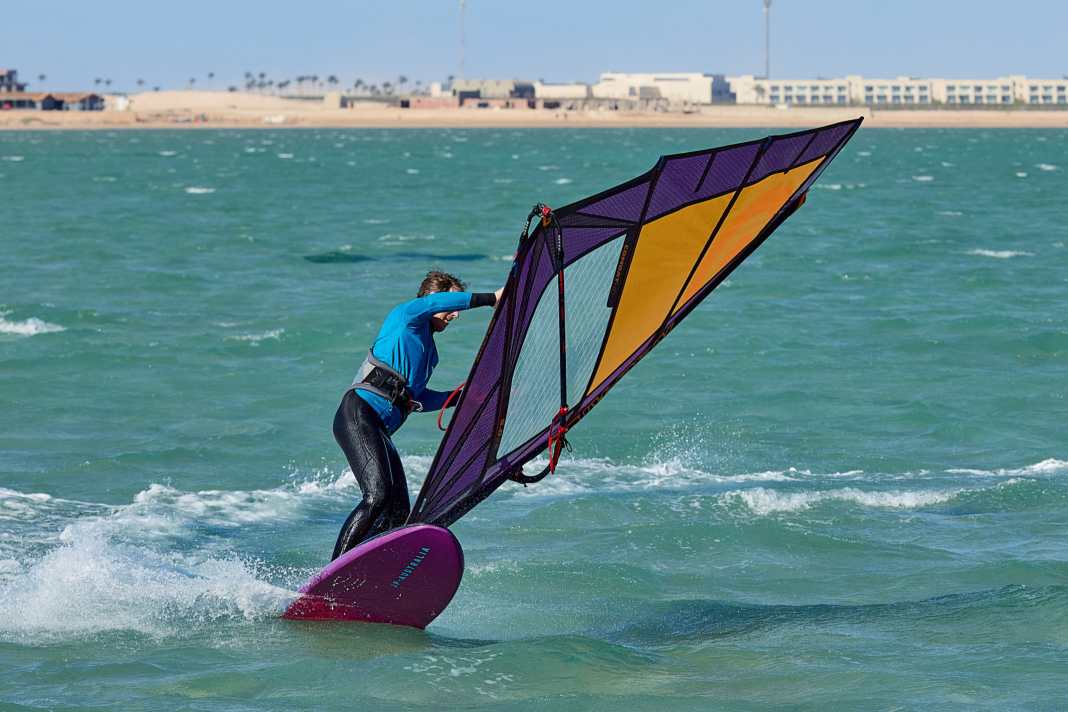





Is the normal Carving-360 too easy for you? Then you should think about the clew-first variant, which combines elements of several classic manoeuvres, such as the duck jibe, carving 360 and push tack.
The clew-first variant is worth a try, especially when there is less wind."
The clew-first carving 360 also works best with boards that are easy to turn. However, it is helpful if you try it slightly underpowered, as the second part of the manoeuvre is really tough.
The most important sticking points with the Carving-360
1. check back pressure
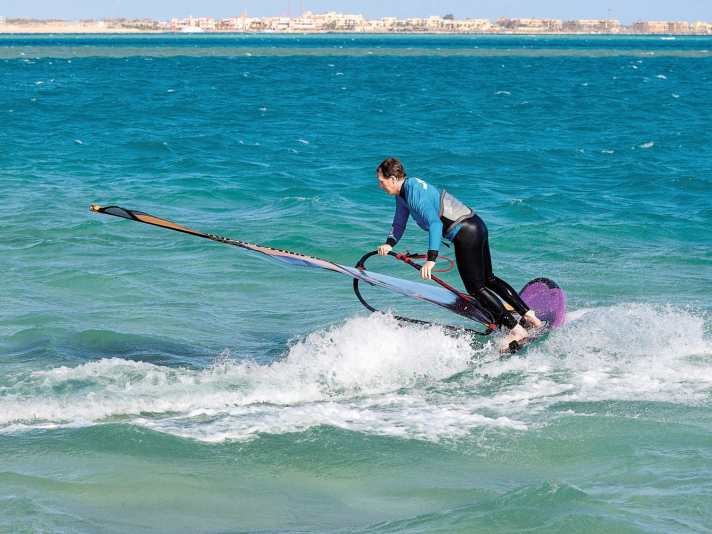
There are numerous manoeuvres in windsurfing that involve a moment of back riding - from basic moves such as the helicopter tack ("helitack") to the most complicated freestyle manoeuvre, everything is included. The carving 360 is also part of this and of course you have a clear advantage if you practise backing and sail control in this position in light winds - ideally with a small sail and on a larger board. The most common problem when backing is that the sail comes towards you and pushes you backwards, i.e. to leeward, off the board. This is always caused by pushing back into the sail. But the harder you push into the sail (especially with your back hand), the stronger the wind's response. Instead, try to consciously keep the sail open when you're sailing downwind. This is only possible if you move it backwards past your body towards the tail and consciously keep the outhaul open.
Sail control in backstroke is the key. This is easy to practise in light winds."
2. with or without foot change?
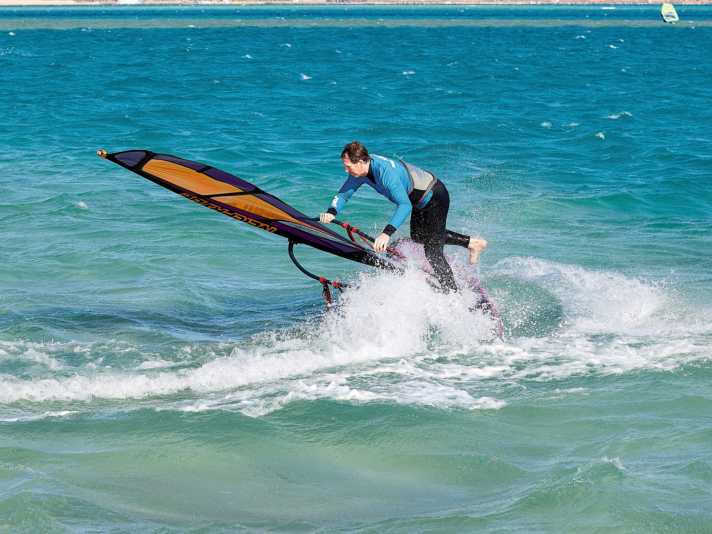
The Carving-360 can also be ridden completely in the straps. However, this requires a board that is easy to turn, has a narrow tail and straps that are mounted far inwards. This is usually the case with freestyle and wave boards. The straps should also be set appropriately large so that you can exert enough pressure on the leeward edge. However, the last quarter of the 360 is much more difficult in straps because there is a risk of sending the tail into a dive. To practise, it is therefore advisable to take a step forwards in front of the mast shortly after the 180-degree mark.
3. clew-first control
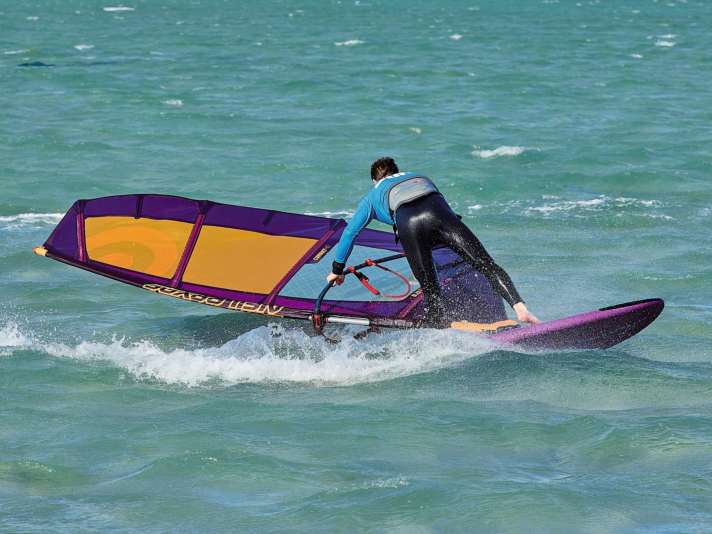
Surfing with the outhaul ahead is always a fidgety affair, and the Clew-first-Carving-360 is no exception. The reason is that the sail is not stabilised by a mast on the leech and starts to flapping quickly. It generally helps with clew-first manoeuvres if you set a trim with a little less loose leech, i.e. a little less pull-through on the luff. In any case, it is advisable to practise this manoeuvre underpowered.

